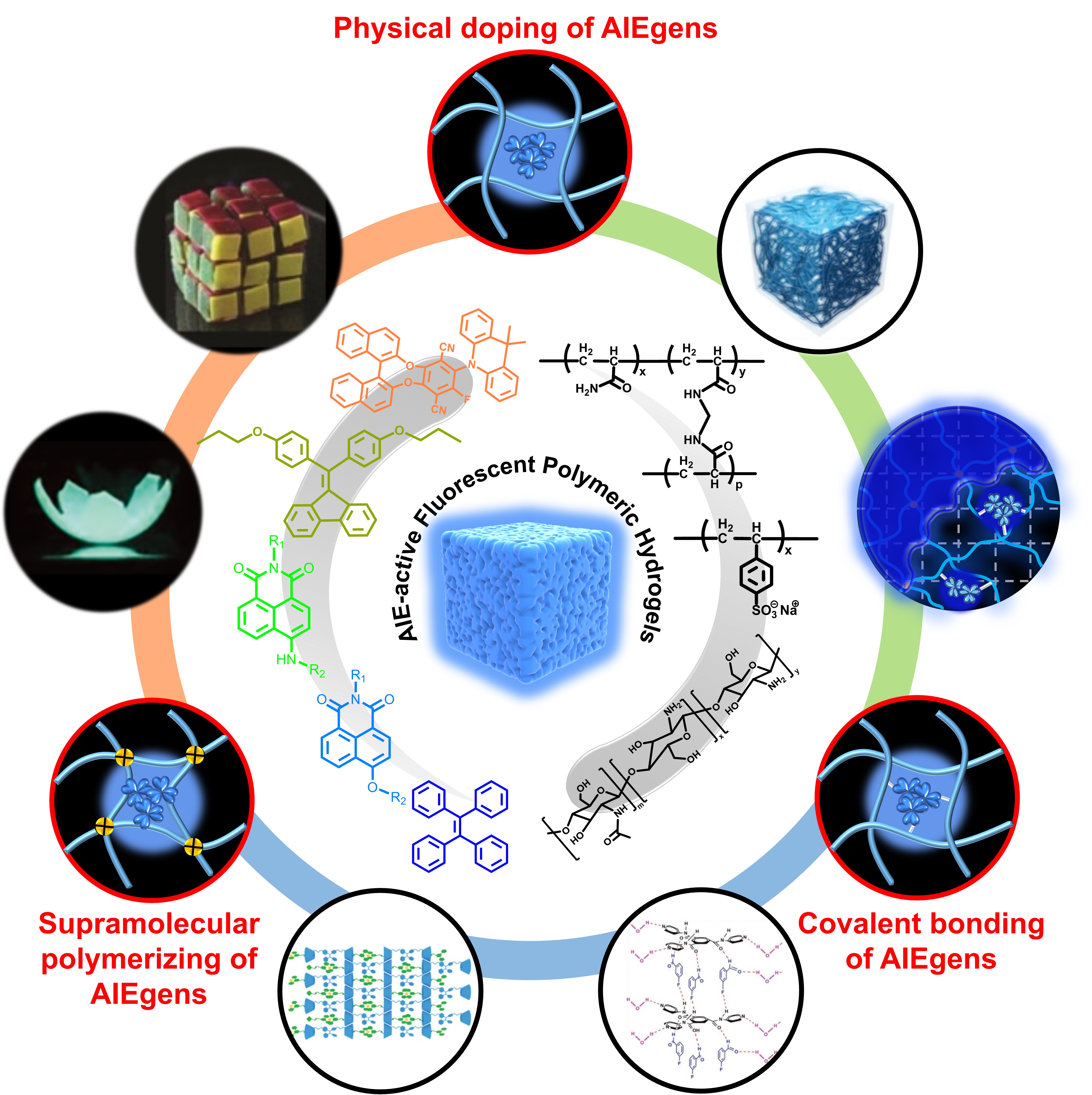As a marriage of polymeric hydrogels and fluorescent materials, fluorescent polymeric hydrogels (FPHs) potentially integrate the merits of both materials, including intrinsic soft wet nature, tissue-like mechanical strength, biocompatibility, biomimetic self-healing feature, facilely tailored structure, responsive fluorescence, etc. Thus FPHs showed wide application, such as sensing, imaging, displaying and anti-counterfeiting over the past decades.
Among them, the FPHs with aggregation-induced emission (AIE) nature drew great attention from researchers, thanks to that the AIE-active FPHs bear many excellent properties and thus representing a promising category of luminescent materials with many frontier uses.
Based on the previous reported studies on AIE-active FPHs, Prof. CHEN Tao and coworkers at the Ningbo Institute of Materials Technology and Engineering (NIMTE) of the Chinese Academy of Sciences (CAS), systematically summarized the recent progress in this young but flourishing research area, with particular focus on the design and preparation of AIE-active FPHs. This work was published in Aggregate.
The development significance and performance advantages of AIE-active FPHs were elaborated.
In addition, great emphasis was put on the synthesis strategy, which are classified as physical doping, covalent bonding, and supramolecular polymerization of organic AIEgens into crosslinked polymer networks. Each synthesis strategy were illustrated with a series of examples and case studies. Meanwhile, their practical or potential applications were demonstrated.
Moreover, the challenges and future perspectives in this field were also discussed, including the exploration of simple and easy-to-operate synthetic methods, fabrication of multi-functional AIE-active FPHs, development of robust red-light-emitting FPHs, as well as systems with emission spectrum far more into the near-IR region, and so on.
This review is expected to shed light on the further research in this field and arouse interests of researchers with various backgrounds thus trigger new opportunities.
The work was supported by the National Natural Science Foundation of China (No. 52073297, 21774138, 51773215), Key Research Program of Frontier Sciences, Chinese Academy of Sciences (No. QYZDBSSW-SLH036), Youth Innovation Promotion Association of Chinese Academy of Sciences (No. 2019297), and the Open Fund of Guangdong Provincial Key Laboratory of Luminescence from Molecular Aggregates, South China University of Technology (No. 2019B030301003).

Fig. The schemetic illustration of the synthesis strategies of AIE-active FPHs (Image by NIMTE)
Contact
CHEN Tao
Ningbo Institute of Materials Technology and Engineering
E-mail: tao.chen@nimte.ac.cn

